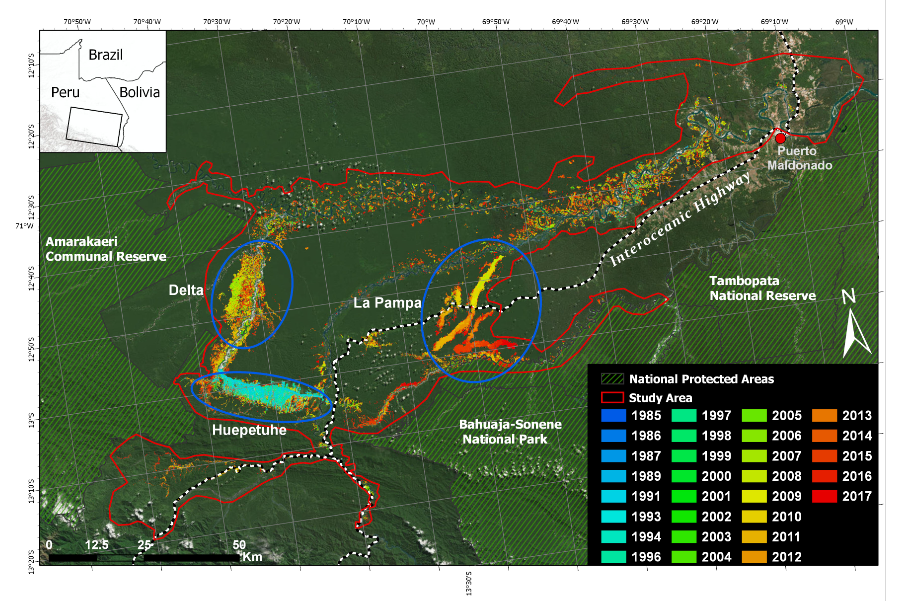While deforestation rates decline globally they are rising in the western Amazon. Artisanal-scale gold mining (ASGM) is a large cause of this deforestation and brings with it extensive environmental, social, governance, and public health impacts, including large carbon emissions and mercury pollution. Underlying ASGM is a broad network of factors that influence its growth, distribution, and practices such as poverty, flows of legal and illegal capital, conflicting governance, and global economic trends. Despite its central role in land use and land cover change in the western Amazon and the severity of its social and environmental impacts, it is relatively poorly studied. While ASGM in southeastern Peru has been quantified previously, doing so is difficult due to the heterogeneous nature of the resulting landscape. Using a novel approach to classify mining that relies on a fusion of CLASlite and the Global Forest Change dataset, two Landsat-based deforestation detection tools, we sought to quantify ASGM-caused deforestation in the period 1984-2017 in the southern Peruvian Amazon and examine trends in the geography, methods, and impacts of ASGM across that time. We identify nearly 100,000 ha of deforestation due to ASGM in the 34-year study period, an increase of 21% compared to previous estimates. Further, we find that 10% of that deforestation occurred in 2017, with 53% occurring since 2011. Finally, we demonstrate key patterns and changes in ASGM activity and techniques through time and space and discuss their connections with, and impacts on, socio-economic factors such as land tenure, infrastructure, international markets, governance efforts, and social and environmental impacts.

